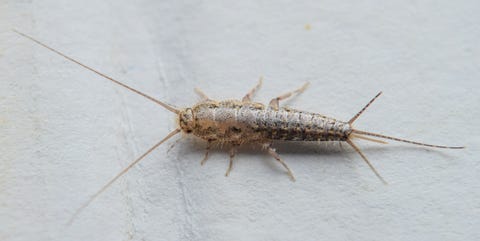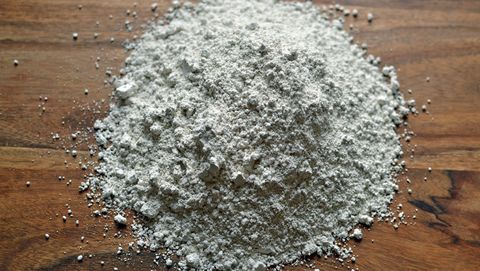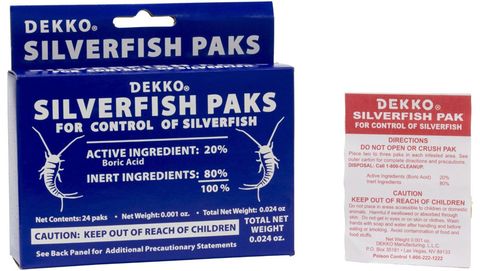Leonid EremeychukGetty Images
Of all the insect infestations you can be cursed with, silverfish might just be the most skin-crawling — right after cockroaches, of course. They’re sneaky little critters, too, doing most of their dirt work in the darkness of night. “As a nocturnal pest, they will spend the day hiding or resting in tight cracks or crevices,” explains Cindy Mannes, Senior Vice President of Public Affairs, National Pest Management Association (NPMA). While you’re asleep, the nuisance pest will come out from the shadows to nosh on books, wallpaper and clothes, destroying them in the process with their excrement, according to the experts at Penn State’s Department of Entomology Cooperative Extension program.
If you find silverfish in your home, you definitely want them gone fast, but pesticides aren’t the only way to go. Follow these steps for an effective pest control plan.
1. Seal Up Food
You don’t want to pour out a bowl of your favorite cereal just to find it’s swimming with these squirming insects. Penn State recommends sealing dry goods like cereal, pasta, rice, quinoa, flour, sugar and pet food in sturdy, airtight containers to prevent silverfish from reaching these tempting food sources.
2. Reduce Humidity
Silverfish thrive in moist, humid environments, says James Norton of Fantastic Pest Control in London. Take away their favorite conditions by using a dehumidifier in damp basements and making sure the bathroom is well ventilated. “Keep in mind that a dehumidifier won’t cure the underlying source of the humidity,” says Dan DiClerico, the Good Housekeeping Institute’s Home Improvement and Outdoor Director. You might also need to keep moisture out by fixing leaking pipes, sealing up any exterior cracks with caulk and making sure your home’s gutters and downspouts are channeling water away from foundation walls.
3. Clear Clutter
Silverfish also love hiding in — and feasting upon — old papers, magazines and books, so if you tend to save every piece of paper that crosses your desk, you might need to do some clearing out. Get rid of the stuff you haven’t looked at in forever, and store items you can’t bear to part with in airtight bins, especially if the papers are kept in the basement or attic.
4. Sprinkle Diatomaceous Earth
Diatomaceous earth, or DE, is a white crumbly powder consisting of the fossilized remains of diatoms, a class of algae. When silverfish come in contact with DE, it destroyers their outer waxy coating, causing them to lose moisture and die. You can sprinkle it around the baseboards in your home and other places you’ve seen silverfish. Norton recommends applying it in the evening, since silverfish are nocturnal, and for several nights in a row in order for it to work.
There is also a lot of advice online about using natural repellants like bay leaves, cedar oil and cinnamon to prevent silverfish infestations. However, there’s no scientific evidence that this strategy works and none of the experts we spoke to recommended it.
5. Try Some Traps
To speed up these management strategies, add a few traps into the mix. You can buy small packets (like these) designed to trap and poison silverfish with boric acid.
Hide them in places where you’re likely to encounter the creepy crawlies, like bookshelves, dressers and desk drawers, under the sink and in the basement and attic. Note that boric acid, like many pesticides, can be toxic if swallowed; in fact, in 2020, pesticides caused nearly 70,000 poisonings in the U.S., according to the National Poison Control Center. “Pesticides should generally be thought of as a measure of last resort,” says Health, Beauty and Sustainability Lab Director Birnur Aral, Ph.D. “If all else fails, try some traps, but it’s critical to keep them away from kids, pets and anywhere food is stored.”
Homemade traps are a non-toxic option that can be effective at catching silverfish. “I found pitfall-style traps work fine, such as tape-wrapped glass jars,” says Dr. Changlu Wang with the Department of Entomology at Rutgers University. Simply wrap a glass jar in textured tape, like medical tape, and place a bit of cereal or other starch inside the jar to attract the silverfish. The textured surface will allow them to crawl up the jar, but once inside the plain glass walls will be too slippery for them to escape.
What attracts silverfish?
Silverfish, which can be found throughout the U.S. and in all types of homes, are attracted to dank, dark places, including attics, basements, bathrooms, closets, crawl spaces and laundry rooms. The critters also love clutter. “Homes with lots of old books, cardboard boxes and an accumulation of dust tend to have more silverfish,” says Dr. Wang. Starch is a favorite food source, so any accessible cereals, flour, pastas and pet foods will also attract them.
This content is created and maintained by a third party, and imported onto this page to help users provide their email addresses. You may be able to find more information about this and similar content at piano.io






